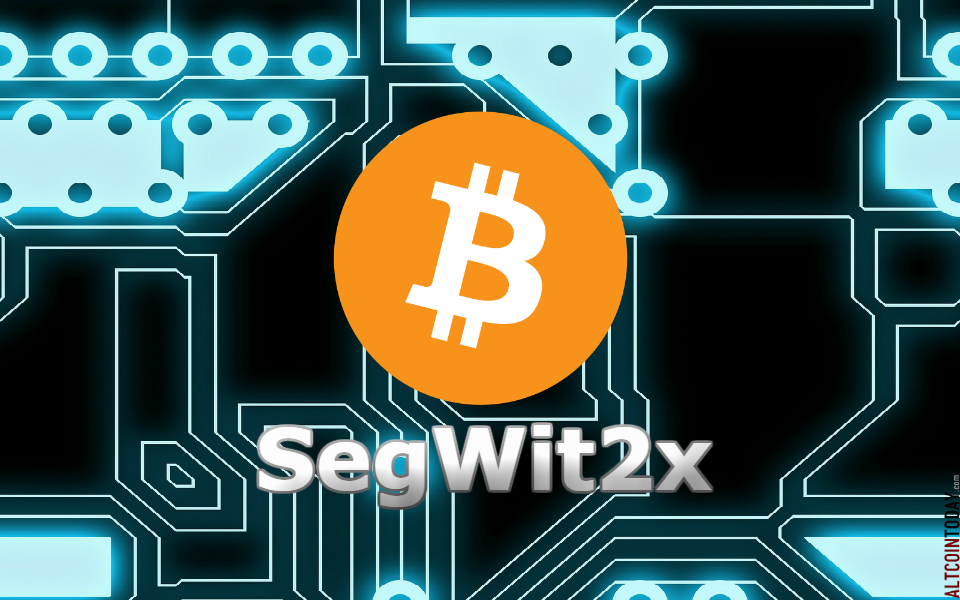Bitcoin Core Dev: Will Segwit2x Fail ?
Bitcoin Core designer Luke Dashjr claims the objective of SegWit2x, a move to give an insignificant fix to determine the contention over initiating SegWit and increment the piece size to permit quicker exchanges on the bitcoin blockchain, is to slow down SegWit.
Writing in Medium, Dashjr says SegWit2x's beta can be broken into five classes. He starts with marking, the most straightforward part. Bitcoin Core 0.14.1 has progressed toward becoming btc1 Core 1.14.3. The most fascinating perception here is that it depends on the old 0.14.1 rather than the 0.14.2 that settled various bugs, for example, miniupnpc helplessness.

Dashjr likewise does not comprehend the purpose behind testnet5, another testnet. In the event that one needed to test a bitcoin change, they would do as such as a change to testnet as opposed to making another one. He doesn't perceive any reason why another testnet was created.
Some approach changes produce results instantly after changing to btc1, even in front of actuating a hard or delicate fork. Exchanges would now be able to utilize around 32k sigops rather than the 16k Core constrain.
New Size and Sigop Limits
Diggers and mineworker pools connected to a btc1 code asserting to help SegWit will be exhorted as far as possible is 8 MB and as far as possible 160k. This last part is in all likelihood a bug since it should sit tight for the hard fork to actuate. By and by, this does not have any kind of effect in light of the fact that the piece layout gave won't flood the breaking point. Dashjr doesn't know about any digger who will include exchanges achieving that point of confinement.
Btc1 has the notable BIP91 that restrains the SegWit actuation to 80% for a couple of days on bit 4. This is basically the same as BIP148, despite the fact that it gives excavators with a 20% hashrate, for example, Bitmain, a veto.
What The Hard Fork Brings
At that point comes the real hard fork. It doesn't generally utilize bit 4, however it enacts 12,960 pieces, 90 days, following SegWit's initiation, regardless of how it actuates. So regardless of the possibility that Bitmain pieces SegWit2x, the btc1 hubs will in any case hard fork 90 days after SegWit is initiated by BIP148. A hard fork won't happen if SegWit does not actuate, but rather BIP148 will happen, so it will enact.
The hard fork itself incorporates a 8 MB greatest square size cutoff, with the code muddled to resemble a 2 MB obstruct, a 160k most extreme piece sigop restrict (made to look like 20k), and a 8 M greatest piece weight constrain (contrasted with a run of the mill 4 MB piece estimate). With respect to the sighash scaling, another 1 MB constrain gets forced on every exchange's non-witness information.
The primary square under the hard fork rules calls for more than 1 MB of non-witness information. Dashjr trusts this could have been exceptional fulfilled utilizing the hard fork bit to keep reorgs from additionally influencing "SPV" light customers.
4 to 8 MB square sizes, as indicated by Dashjr, don't bode well. Indeed, even 1 MB squares have demonstrated risky to bitcoin. He doesn't imagine consenting to the hard fork under any conditions, other than with a delicate fork to keep the size sensible. Be that as it may, and, after its all said and done, he would not bolster the proposition. In the event that there will be a hard fork, some helpful changes ought to be made, for example, local union mining, something Satoshi recommended as the main hard fork years back. Or, on the other hand settling some extraordinary bugs like the time twist weakness.
SegWit2x Hard Fork Will Fail
Dashjr notes he is by all account not the only one raising these issues, and he affirms that SegWit2x's hard fork will fall flat.
SegWit2x's genuine reason, as indicated by Dashjr, is to slow down SegWit. He considers it to be a diversion shape the up and coming BIP148 delicate fork that has as of now sent irreversibly to the system. In elevating BIP91 and SegWi2x to be a BIP148 elective, excavators are truly making another power get to recover their veto, something that lone exists as a route for Bitmain to obstruct the entire activity ultimately.
If insufficient of the economy moves up to BIP148 by August, Bitmain picks up the opportunity to execute a chain split assault and trap obsolete hubs to take after their invalid chain, ending up plainly fiscally subject to it before getting a handle on the assault's event.
The main answer is to make attention to BIP148 and guarantee however much of the economy as could be expected has updated before August, Dashjr claims. This is genuine regardless of whether one backings SegWit's hard fork. Indeed, even those restricted to SegWit should make everybody move up to BIP148, which does not forbid SegWit2x or require anybody, including excavators, to help SegWit.
BIP148 just requires diggers can never again prevent others from embracing SegWit. With adequate help, diggers can't execute a chain part against old hubs without paying a money related misfortune. There are no dangers to running BIP148 if SegWit2x members are straightforward, as per Dashjr. On the off chance that they are not legit, BIP148 is expected to keep one's hub secure.
@steemcleaners content plagiarised https://www.cryptocoinsnews.com/bitcoin-core-developer-claims-segwit2x-will-fail-claims-its-goal-is-to-stall-segwit/